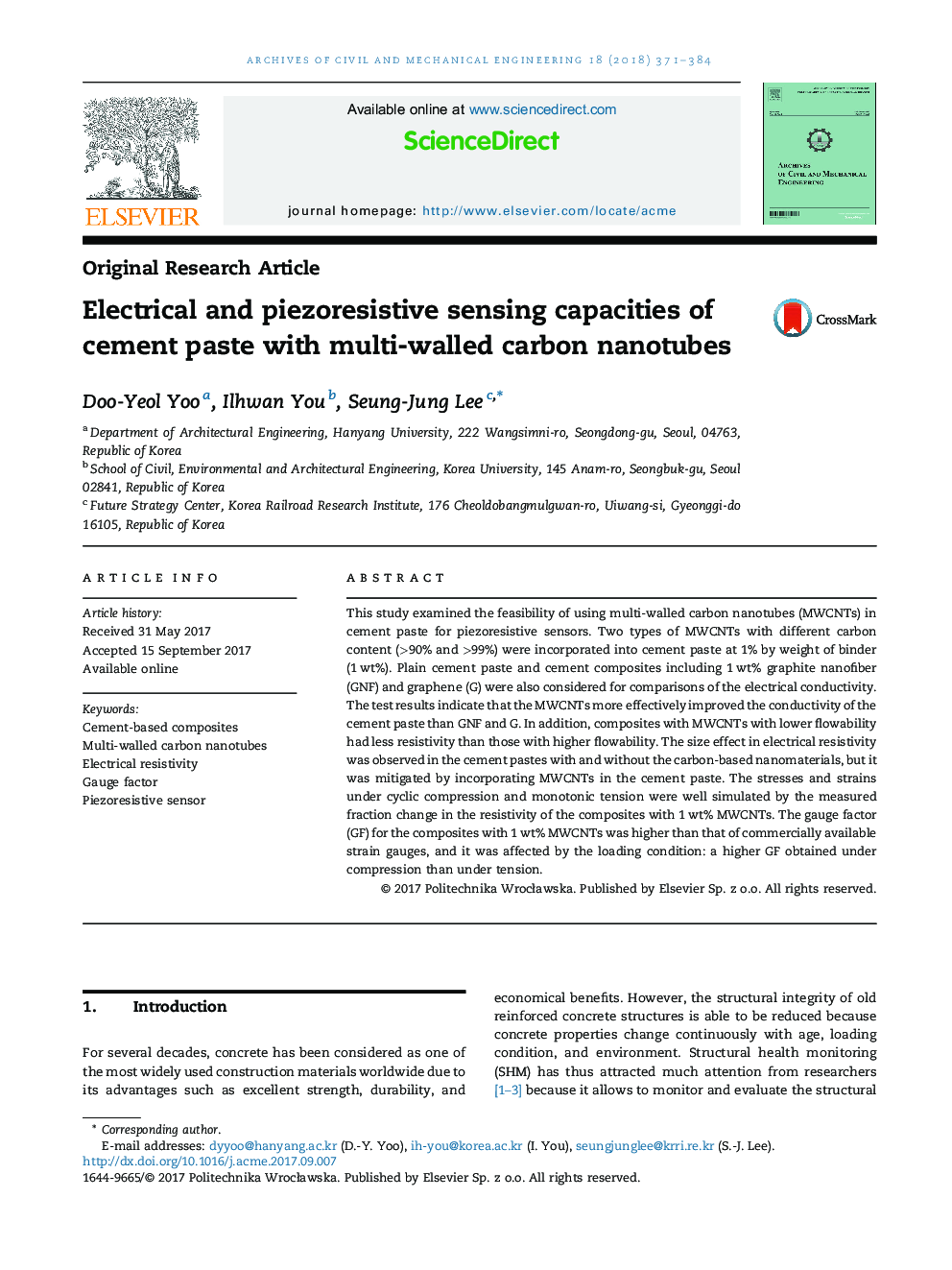| Article ID | Journal | Published Year | Pages | File Type |
|---|---|---|---|---|
| 6694586 | Archives of Civil and Mechanical Engineering | 2018 | 14 Pages |
Abstract
This study examined the feasibility of using multi-walled carbon nanotubes (MWCNTs) in cement paste for piezoresistive sensors. Two types of MWCNTs with different carbon content (>90% and >99%) were incorporated into cement paste at 1% by weight of binder (1Â wt%). Plain cement paste and cement composites including 1Â wt% graphite nanofiber (GNF) and graphene (G) were also considered for comparisons of the electrical conductivity. The test results indicate that the MWCNTs more effectively improved the conductivity of the cement paste than GNF and G. In addition, composites with MWCNTs with lower flowability had less resistivity than those with higher flowability. The size effect in electrical resistivity was observed in the cement pastes with and without the carbon-based nanomaterials, but it was mitigated by incorporating MWCNTs in the cement paste. The stresses and strains under cyclic compression and monotonic tension were well simulated by the measured fraction change in the resistivity of the composites with 1Â wt% MWCNTs. The gauge factor (GF) for the composites with 1Â wt% MWCNTs was higher than that of commercially available strain gauges, and it was affected by the loading condition: a higher GF obtained under compression than under tension.
Keywords
Related Topics
Physical Sciences and Engineering
Engineering
Civil and Structural Engineering
Authors
Doo-Yeol Yoo, Ilhwan You, Seung-Jung Lee,
